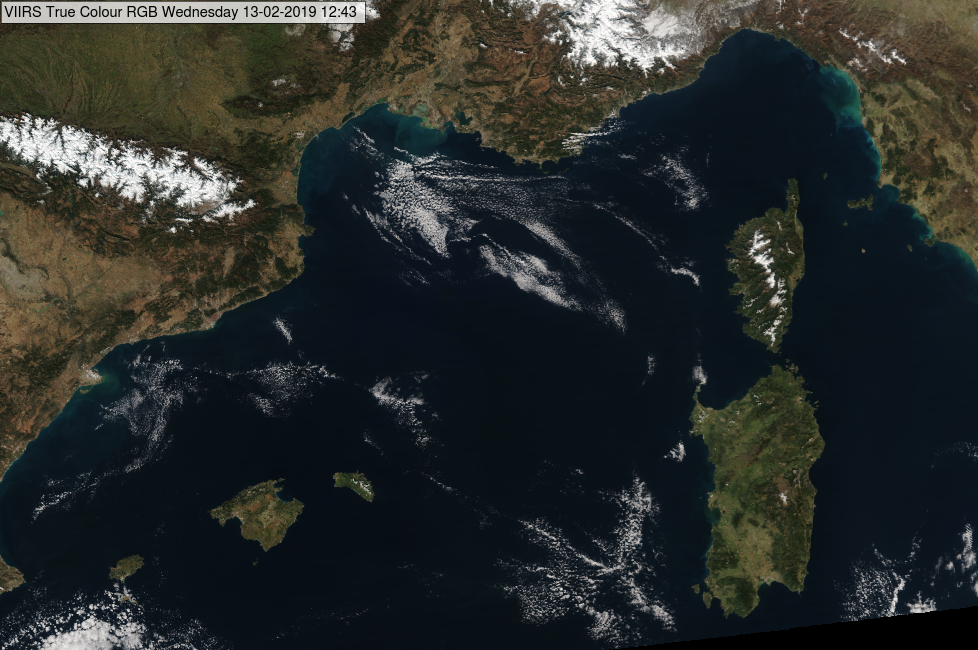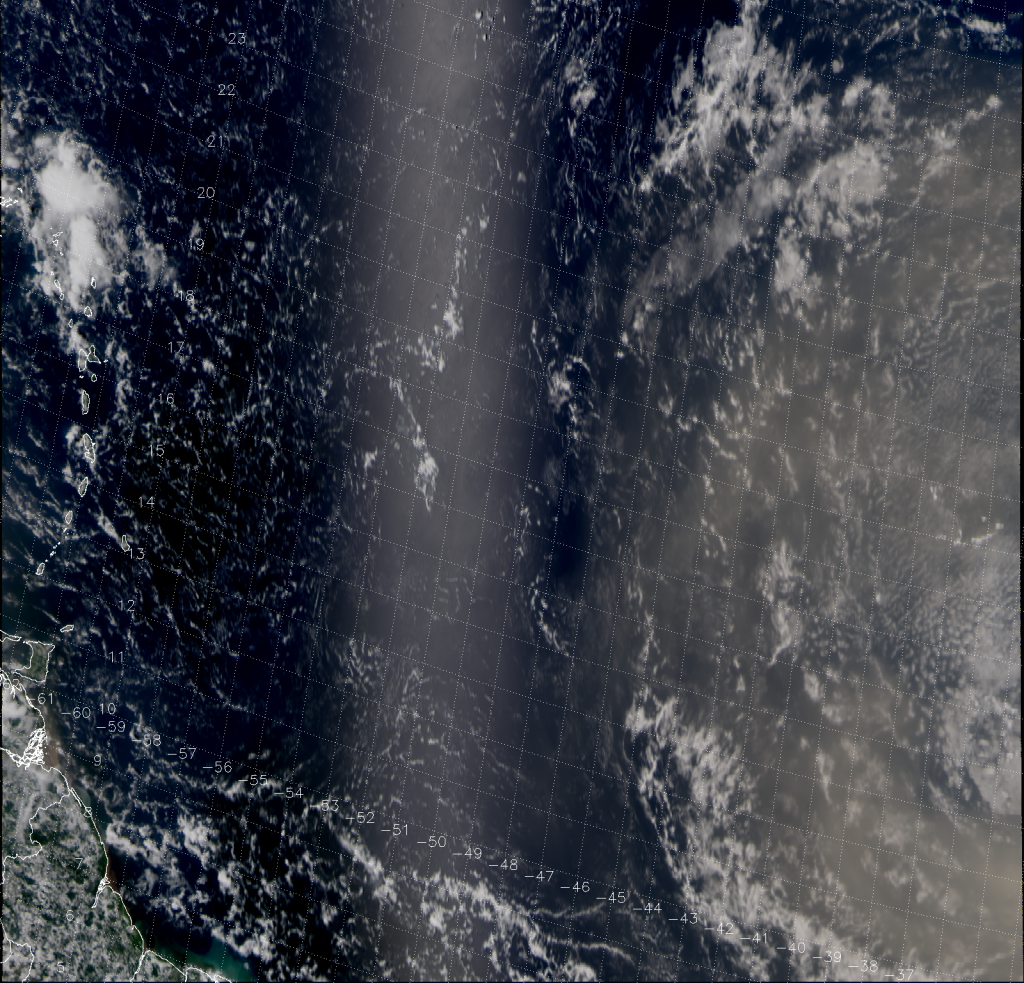Oceans and lakes
Deep, clean water bodies - most parts of oceans and seas – usually appear dark blue, almost black in the VIIRS True Colour RGB images, except the area of sunglint which is blurred greyish, sometimes whitish.
The next images show the Atlantic Ocean and the Mediterranean Sea.

NPP, VIIRS True Colour RGB image for 04 October 2018, 12:17 UTC

NPP, VIIRS True Colour RGB image for 31 July 2013, 16:29 UTC
The image below shows sunglint, see the blurred greyish straight strip. A sunglint is the mirror-like reflection of the Sun from a water surface. Sunglint has more complicated structure in case of higher surface roughness (high waves). In the image below the brownish grey area east of the sunglint is dust cloud and the white patches are water and ice clouds.

NPP, VIIRS True Colour RGB image for 31 July 2013, 16:29 UTC
(source: http://rammb.cira.colostate.edu/projects/npp/blog/index.php/uncategorized/abafado-bruma-seca/)
Note that:
• The water reflectivity depends not only on the water characteristics but as well as on the solar and satellite viewing directions. Towards the edge of the swath the water colour may be brighter, while along the sub-satellite track it might be darker.
• Sea ice appears whitish.
• If the water is not deep and clean then its colour modifies, see examples separately.
• If there is high concentration aerosol plume above the sea (such as lofted dust, smoke) the colour of the sea trough the aerosol layer turns to greyish/brownish.
Explanation of the colour of deep, clean water bodies in the True Colour RGB (see the recipe):
The reflectivity is very low in all three visible channels, but still a bit higher at lower wavelengths, and so the deep, clean water bodies appear dark blue, almost black in the True Colour RGB.

